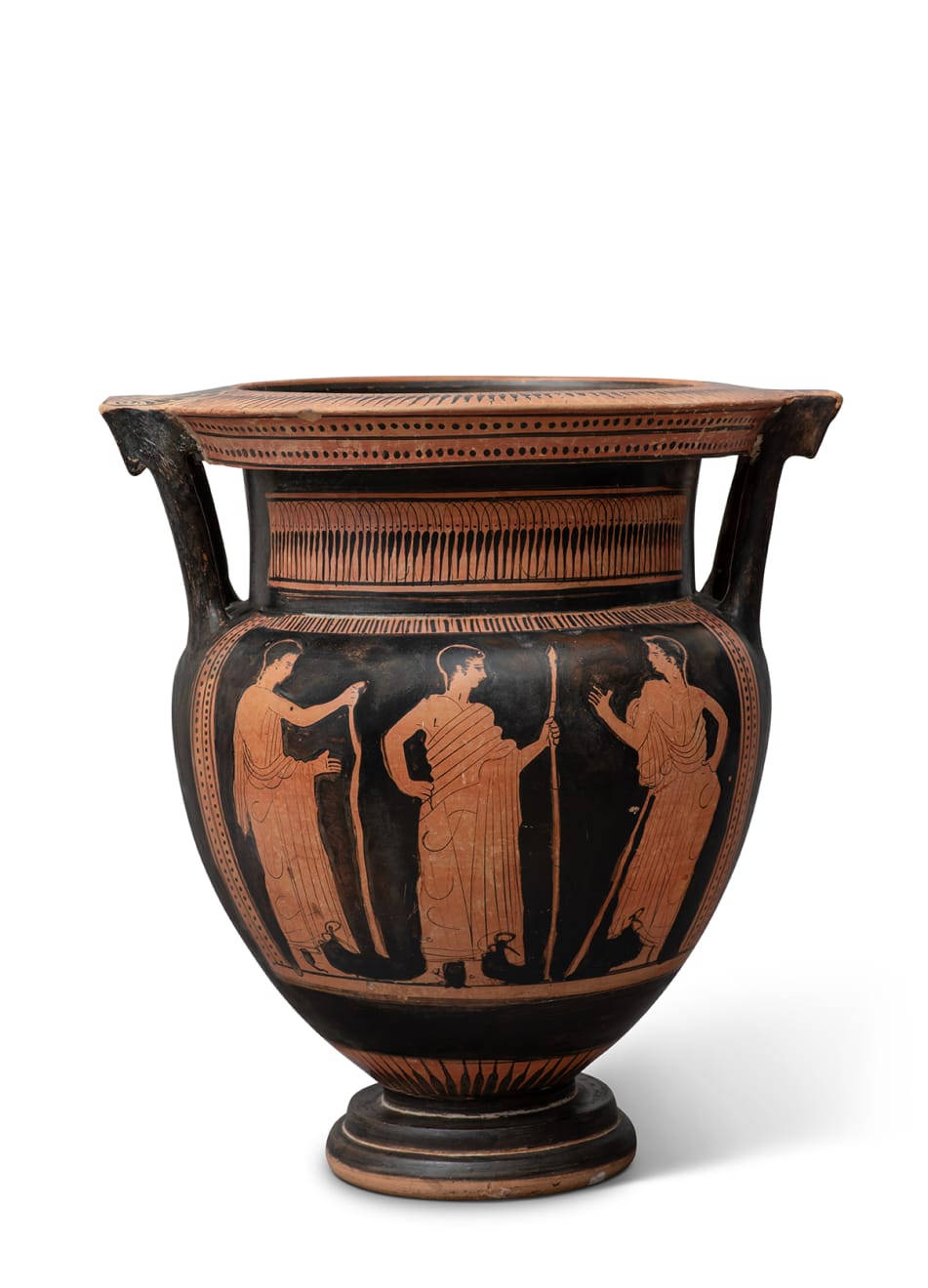Greek
Further images
Provenance
St. Louis City Art Museum, acc. no. 40.21, acquired in 1921
Sotheby’s, New York, 5 June 1999, lot 175
American private collection
Literature
Triptolemos in ancient Greek myth was a demigod and one of the Eleusinian princes, who welcomingly received the goddess Demeter when she was mourning the loss of her daughter Persephone. In return Demeter instructed Triptolemos in the ways of agriculture and sent him all over Greece to teach mankind the art of growing grain. The scene depicted on the obverse of this particular vase shows the moment just before Triptolemos departs on his Mission in a winged chariot.
The Mission of Triptolemos is best known from representations on Athenian vases, from their inception in the mid 6th century BC to their finale in around 425 BC. From the surviving examples the theme of the Mission was at the height of its popularity in the second half of the 5th century BC.
Beazley called the Duomo Painter after a lost column-krater once housed in the cathedral of Agrigento. More than 30 vases have been attributed to his hand. The Duomo Painter’s depictions of the departure of Triptolemos were influenced by the Villa Giulia Painter, who was also working in the second half of the 5th century BC.
Publications
‘Greek Painted Vases’, Bulletin of the City Art Museum of St. Louis, vol. 7, no. 1, January 1922, p.11, fig. 4
C. Dugas, 'La mission de Triptolème, d'après l'imagerie athénienne' in Mélanges d'archéologie et d'histoire, tome 62, 1950, pp. 7-31, no. 86
J.D. Beazley, Attic Red-Figured Vase Painters, vol. II, Oxford, 1968, p. 1117.6
A. Pleschow Bindokat, ‘Demeter und Persephone in der attischen Kunst des 6. bis 4. Jahrhuderts v. Chr.’, Jahrbuch des Deutschen ArchäologischenInstituts, 87, 1972, p. 86. fig. 19
T.H. Carpenter with T. Mannack, and M. Mendonca, Beazley Addenda, Oxford, 1989, 331
LIMC: VIII, pl. 39 TRIPTOLEMOS 125 (A)
T. Mannack, The Late Mannerists in Athenian Vase-Painting, Oxford, 2001, pl. 37







